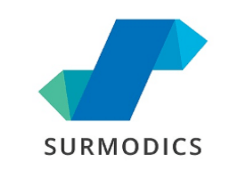
Jose Ignacio Bilbao, Pamplona, Spain, spoke to Interventional News at the recent ECIO conference (July 21 – 24) about his area of expertise, radioembolization, the importance of collaboration between specialties and interesting times ahead.
Can you comment on the multidisciplinary aspect of treating cancer?
There was a session at ECIO on the multidisciplinary treatment of colorectal liver metastases. What was clearly said is that curative treatment for this disease is surgery and that surgery has to be performed more frequently, and to a larger number of patients. So, any treatment that we perform to downstage patients and allow them to be treated by surgery is a good option for patients.
During the meeting we also saw that there are several protocols for intravenous chemotherapy demonstrating that they are useful. But there is still a need to see an increase in the response of these patients. It has been demonstrated by some papers that if we add radioembolisation to the first line of chemotherapy, this will be an interesting alternative, so that we can increase the number of patients who can be treated by surgery.
Also, it has been demonstrated that radiofrequency and other kinds of new ablative treatments are useful to achieve local control of the disease, so there probably should be an increase in the collaboration of the protocols between oncologists and interventional radiologists both over endovascular procedures (radioembolisation or drug-eluting beads) for liver metasases and also collaboration over percutaneous procedures (radiofrequency or maybe the newer microwave treatments) etc.
The aim is to have patients to be able to be treated by surgery, so there should be an increase in collaboration and there should be an increase in the establishment of protocols that will contain both intravenous chemotherapy and interventional treatments.
What interesting options are currently out there?
New drugs, like bevacizumab, may interfere in the amount of vascularisation of the liver tumours, so it will be interesting to examine how they should be scheduled in the endovascular treatment protocols. Right now we are still working on integrating radioembolization into the treatment of colorectal liver metastases…so there is a lot of work to do!
In colorectal metastases, it is important to determine where these drugs will fit in protocols in terms of timing and in terms of how to adapt doses of intravenous chemotherapy to endovascular or percutaneous procedures.
For hepatocellular carcinoma, what we know now is that with new therapeutic endovascular procedures that we have, such as radioembolization and drug-eluting beads, we can measure and compare results more easily, because we know exactly how the treatment was administered, with what amount of drug, what amount of radiation etc, so we can compare series more easily.
What is the future of “conventional” TACE?
To say conventional TACE at this moment does not mean anything— because conventional TACE for some IRs indicates the use of lipiodol and particles, to others it means lipiodol and drugs, to still others it is different kinds of drugs so it is quite difficult to compare the results of conventional TACE.
What we know from some papers in the last few years is that we are doing better with conventional TACE, meaning with the incorporation of spherical particles, and the incorporation of more selectivity or more knowledge of liver anatomy, we are treating the tumours better. In my opinion, most probably, the way forward is not with conventional TACE. It is with radioembolization or drug-eluting beads and I prefer radioembolization. Of course, I understand that many other interventional radiologists use DC beads or Hepaspheres with drugs, because you can obtain an association of ischaemia and dose delivery. However, in my opinion, the local problems that you may cause are bigger with drug-eluting beads than with radioembolization.
Also interesting was the paper that was presented by Jeff (JF) Geschwind which speaks about the association of anti-angiogenic drugs and the local effect due to ischaemia or drug or radiation. This is interesting because with this you decrease the possibility of neo-angiogenesis and then it becomes an interesting alternative. So now we are waiting for the results of some protocols and some series that are being performed in order to compare results between different series, but the future is definitely interesting.












